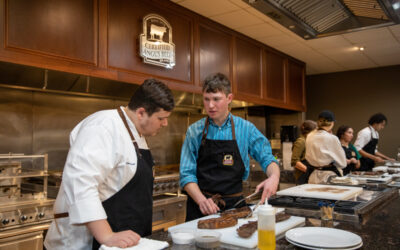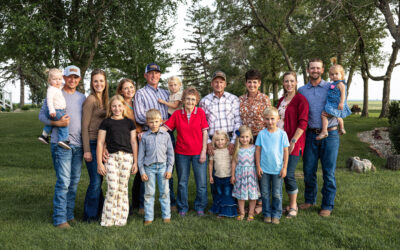
The art of the fix
by Miranda Reiman
4-H prep should be an Olympic sport. Or at least it felt that way as I helped my older kids get ready for entry day at the county fair. Forms filled out, recipes found, last coats of paint applied. It’s a race against the clock. Even with a couple of decades behind her, I think my mom still gets flashbacks to the anxiety around the third week in August.
As I got in the car to drive to our fairgrounds recently, I exhaled a sigh of relief through my ironic smile at all that didn’t go right this year.
The flowers that weren’t blooming in time for the table setting centerpiece? We bought silk. The paint that wouldn’t dry in the unusually humid weather that stayed on all week? My son had to apply a touch-up or two after it was loaded into the pickup bed, and then we left a high-powered fan on it until the last second.
Even as we walked up to the table for check-in, it continued: “Those photographs are supposed to be on tag board, not foam board. They will be docked a full ribbon placing unless you can get that corrected.”
We had 15 minutes, more projects to enter and a sleeping toddler in the car, but a Dollar Store across the street held hope. I wanted to just forget it, but my 9-year-old’s eyes told me I couldn’t.
The solution came in the form of a friend who walked in with extra tag board in the final minutes, a borrowed pair of scissors and rubber cement from the Extension office.
4-H taught me many lessons during my middle school and high school days, but I now have a different vantage point. As mostly support staff, chief encourager and head of the taxi service, this year showed me another truth: you can be pretty creative when you have to be.

Cattlemen and women already know this. Anybody who has ever dealt with a mad mama cow, and still managed to tag that baby, knows that sometimes stressful situations inspire the most creative solutions.
Sometimes you even marvel at your own MacGyver-like skills with a field or roadside repair.
But what problems have you just shrugged off as unsolvable?
I was recently discussing the labor shortage in agriculture with a Colorado producer, noting it’s a subject that comes up on every ranch I visit.
“They just aren’t creative enough,” he said. His calf branding day was fully staffed via a donation to the local wrestling team.
Innovation born from necessity.
Maybe there’s a health problem that could benefit from a change in herd management rather than a change in vaccinations. Maybe there’s a marketing hurdle that just needs you to build some relationships or back your herd with data, rather than trying a different auction barn.
We often say cattlemen are part scientist, part businessman, with a dose of meteorologist and mechanic thrown in. You’re rooted in science, but when great and immediate need comes along, don’t forget there’s an awful lot of your job that is still an exercise in art.
you may also like
Connecting With Consumers at the Meat Case
CAB is committed to prioritizing consumers’ evolving expectations for high-quality beef, sustainability and connecting the next generation. Explore our Ranch to Table program and learn how we connect the next generation of ranchers and culinarians for a brighter, more sustainable future for the beef industry.
Michigan Angus Family Earns Ambassador Award
Seldom Rest Farms in Michigan, known for show-ring success, receives the CAB 2023 Ambassador Award for sharing their beef production story with Meijer grocery communications team and other CAB partners. The Foster family shares their passion for Angus cattle while fostering connections within the beef supply chain and promoting the Angus breed and CAB’s role in the industry.
North Dakota Partnership Earns CAB Progressive Partner Award
The Bruner and Wendel families earned the 2023 CAB Progressive Partner award by selling high-quality beef through Dakota Angus, LLC, as part of the CAB Ranch To Table program. They focus on their commitment to quality, data-driven decisions, achieve impressive CAB and Prime percentages and offer high-quality beef directly to consumers in their communities.



